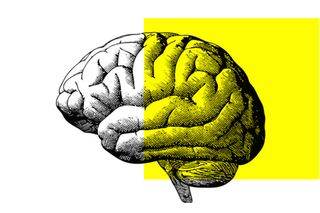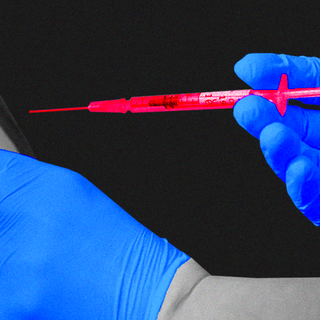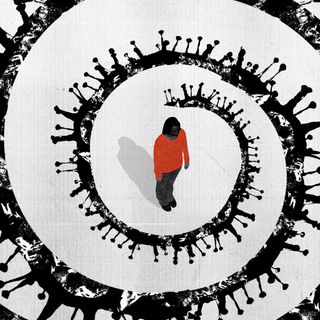
In a First, Scientists Find the Brain Region Linked to the Clitoris
The thus-far elusive discovery pinpoints the exact region involved and can help survivors of sexual trauma and dysfunction, say researchers.

The joke goes that the clitoris, the body’s most sensitive erogenous organ, is hard to find in general. A familiar and sad refrain is cis-men are clueless about how to navigate bodies that aren’t similar to their own. But it turns out, science was lagging behind too, in a manner of speaking. A study published on Monday in JNeurosci reported that for the first time, scientists identified the brain region that responds to clitoral stimulation.
Prior to this study, research had not understood exactly which region in the brain was linked to female genitalia. “It’s completely understudied, how the female genitals are represented in the somatosensory cortex in humans, and whether it has at all the capacity to change in relation to experience or use,” co-author Christine Heim, director of the Institute of Medical Psychology, Berlin, told AFP.
“We provide a precise location of the human female genital field… and, for the first time, provide evidence in support of structural variation of the human genital field in association with frequency of genital contact,” the paper stated.
The somatosensory cortex is responsible for receiving and processing sensory information — such as touch, temperature, and pain. Picture this region like a map of the human body; each part in this cortex corresponds to a different body part. The somatosensory region associated with a finger, for instance, will receive and process sensory information from the finger. Funnily enough, the area that corresponded to the clitoris wasn’t pinpointed — previous estimations placed it near the regions of the brain linked to the hip or the foot.
Researchers looked at 20 participants — women between ages 18 and 45. They found that the region that represents the clitoris in the somatosensory cortex is near the region that represents the hip, similar to that of a penis. But the precise location varied for each woman. One of the key findings of the study is that the brain region in question is more developed among study participants who reported having more sex.
There is a knowledge gap in how much science understands female pleasure centers — perhaps not for a lack of trying. A 2010 study tried to find the “somatosensory representation of the human clitoris” using functional magnetic resonance imaging (fMRI) scans and located it at a place that did not correspond to the study’s expectations. A 2011 study also did map the areas of the brain associated with sexual arousal in women, using the same fMRI scanning technique. The participants of that study stimulated the vagina, cervix, clitoris, and nipples — and researchers were able to then identify the genital sensory cortex in women. But this was a much broader area representing erogenous sensations, and didn’t pinpoint exactly where the clitoris in particular was represented.
Related on The Swaddle:
New Study Suggests the Clitoris Has a Reproductive Function
Contrast with the research around penises. The somatosensory representation for the male genitalia was discovered way back in 2005. The difficulty in finding the clitoris, literally and figuratively, may have to do with the fact that previous studies had obfuscated results. Since other parts were touched along with the clitoris, it was impossible to detect the exact brain regions responding to the clitoris, as Science Alert noted.
The present study circumvented this problem through a nifty little device the participants were asked to wear. The device was designed to be worn near the clitoris and deliver jets of air. It was then activated eight times for 10 seconds each, while participants underwent a functional magnetic resonance imaging (fMRI) scan.
There are some theories as to why the clitoris was found to be more developed in some women — one of which has to do with brain plasticity. The term refers to the brain’s tendency to become bigger when its parts are used more often. For example, a past study involving taxi drivers in London showed that the greater their navigating experience, the more the hippocampus region — associated with long term memories and spatial navigation — in their brains expanded.
“We found an association between the frequency of genital intercourse and the thickness of the individually mapped genital field,” said Heim.
It is too soon to draw a direct cause-effect relationship between intercourse and brain region expansion. Until future studies confirm this, scientists are hesitant to confirm that more genital touch causes an expansion of its corresponding brain region. The corollary could also be true — a naturally larger brain region associated with the genitals can prompt more intercourse or make a person more sensitive to touch in that region.
But there are compelling clues pointing towards the former theory. A 2013 study, conducted by Heim herself, found that people who suffered childhood sexual violence had the brain regions corresponding to genitals become thinner. “We speculated back then, that this could be the response of the brain to limit the detrimental perception of the abuse,” she said. The same study also found that emotional abuse was correlated to a thinning in the brain region that is associated with self-awareness and self-evaluation.
For now, researchers say that the present study can help inform therapeutic interventions for survivors of sexual trauma, and can also help people with sexual dysfunction of any kind. “Our results pave the way for future research into the plasticity of the human genital cortex as a function of normal or adverse experience as well as changes in pathological conditions, i.e. sexual dysfunction, sexual deviation or sexual risk-taking behavior,” the study noted.
Rohitha Naraharisetty is a Senior Associate Editor at The Swaddle. She writes about the intersection of gender, caste, social movements, and pop culture. She can be found on Instagram at @rohitha_97 or on Twitter at @romimacaronii.
Related


Omicron Fears Lead to a Rise in Unauthorized Booster Shots
